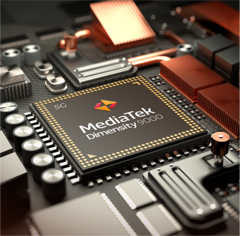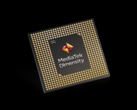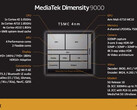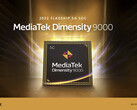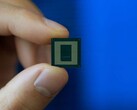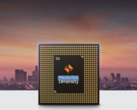MediaTek has been doing a great job with its Dimensity series of SoCs since the Dimensity 1000 was launched early in 2020. Where it’s previous SoC’s were often based on slightly older Arm architecture and fabrication technologies, the Dimensity 1000 featured Arm’s most recent design at the time launch. Although not on par with the Snapdragon 865 or even the Samsung Exynos 990, it signalled MediaTek’s intention to move into higher end Android smartphones.
Since then, the Taiwanese company has released a number of chips under the Dimensity banner with its most recent flagship model, the Dimensity 1200 also proving to be a solid offering. Although still not quite up to either the Snapdragon 888 or the Exynos 1200, it once again showed that MediaTek was keen to give both consumers and manufacturers a genuine alternative to the Snapdragon-Exynos duopoly.
MediaTek, however, took a big step forward with the launch of the Dimensity 9000 last week. So much so that there is a strong chance that it will outperform the forthcoming Snapdragon 898 (or Snapdragon 8 Gen 1 as it may now be called), and the Exynos 2200. In a first for a Dimensity chip, it will feature an Arm Cortex X core (in this case an X2) along with three Cortex-710 cores comprising its high-performance CPU cluster. This will match the expected configurations of the Snapdragon 898 and Exynos 2200. All will also feature Arm’s latest Armv9 architecture and will in fact beat Apple to this technology.
GPUs aside for the moment, where MediaTek will gain its edge over the Snapdragon and Exynos is the fabrication process. While Qualcomm and Samsung will be using Samsung’s foundries, MediaTek has managed to secure access Taiwanese foundry giant TSMC. TSMC’s fabrication technology is widely regarded to be significantly ahead of Samsung with chips produced using its tech typically exhibiting better sustained performance and efficiency. In this instance, MediaTek will be the first company to access TSMC’s new N4 node, which should deliver substantial improvements to efficiency and some inherent uplift in performance.
One thing MediaTek won’t be doing, however, is challenging Apple’s mantle as the undisputed king of mobile processors. During the launch of the A15 Bionic at Apple’s October iPhone 13 launch, it claimed that its SoC was “50 percent faster than the competition”. Leading chip site Anandtech discovered during its extensive testing that the A15 is actually 62 percent faster than the Snapdragon 888. As strong as the Dimensity 9000 is going to be, that is simply too big a gap, even with the advantage of one generation newer fabrication technology and Armv9 architecture versus the Armv8 architecture found in the A15.
How do we know this? Arm itself has already published what it expects the performance gains of Armv9 over Armv8 and it did so when it announced the new architecture (it’s first new architecture in ten years). According to Arm, it expects CPU performance gains of more than 30 percent, but only over the next two years combined. That still leaves the MediaTek Dimensity 9000 (and the next Snapdragon and Exynos chips) well behind the A15, although MediaTek is claiming gains of 30 percent over the current Android competition. Apple has been able to achieve its lead by pouring billions of dollars into custom chip design and development, while the competition has been using largely stock Arm designs.
Qualcomm’s US$1.4 billion acquisition of Nuvia, which includes a number of former top Apple chip engineers could change the situation in the future, but Apple’s A16 is almost certainly to be the first chip from the company which will feature underlying Armv9 architecture. Of the three would-be challengers to Apple’s crown, Qualcomm is the most likely to close the gap given its investment in developing customized Arm-based chips. That said, it’s current plans for the Nuvia team is to develop a PC chip that can challenge Apple’s M1 Pro and M1 Max chips. A spin-off benefit, however, could be faster mobile CPU cores.
The story on the CPU side is also likely to be repeated on the GPU side too. Once again, in Anandtech’s detailed testing the custom GPU in the Apple A15 Bionic is also substantially more performant than the competition. While at least one test has questioned the sustained performance of the A15 GPU in a Genshin Impact test, Anandtech is of the view that it isn’t a fair assessment. Genshin Impact, they argue, is far less demanding on Android-based SoCs for compatibility reasons whereas the A15 GPU is more fully leveraged and at higher resolutions. In all standardized GPU benchmarks, the A15 dominates the competition and even the new AMD GPU in the Samsung Exynos 2200 is unlikely to beat it either.
It’s not all doom and gloom, however. One particularly exciting aspect of the Dimensity 9000 is its Image Signal Processor (ISP), which has bigger piplelines than anything we've yet seen from anyone, including Apple. That said, there isn't yet any single camera sensor that can fully leverage it yet, although that could change as MediaTek says it is working with vendors to do just that. We have, however, reached a point with flagship mobile SoCs from any vendor are powerful enough to power PCs quite comfortably. The next generation of Android flagship mobile chips from MediaTek, Qualcomm and Samsung are all going to provide plenty of performance for users. This makes it a very exciting time for smartphone fans of any stripe.
Buy the MediaTek-powered Lenovo Chromebook Duet from Amazon for US$319.
Source(s)
Own.




